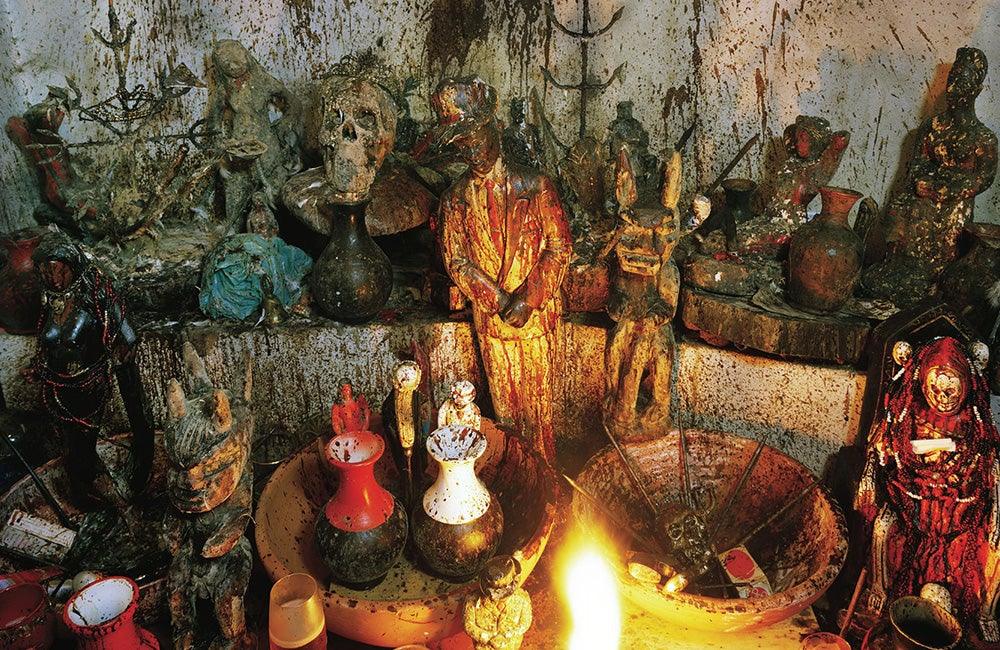First published: Fall 2010
In hundreds of rooms and cellars dotted around the working class suburbs of Buenos Aires – a far cry from the Parisian style avenues and chic apartment blocks of the city’s centre – eclectic icons peer out from improvised shrines. Among them are scantily dressed femme fatales with flowing hair, dancing gypsies with veiled faces, mysterious caped warriors, earthen figures with cowry shells for eyes and mouths, and horned, devilish men.
These are some of the many manifestations of the African-American spirits Eshu and his seductive female counterpart, Pomba Gira – deities seen by a small but growing number of inhabitants of the Argentine capital as a source of consolation for their problems. Once a month, devotees bring the figures offerings of flowers, cigarettes and liquor, and the temples – usually the homes of the cult leaders – come alive with the sound of drums and singing. In a whirl of black capes and red dresses, the initiated receive the spirits in possession trances, during which the spirits are said to impart advice and wisdom.
The images of Eshus and Pomba Giras are relatively new to this European style city. Having first made the journey from West Africa to Brazil in the consciousness of slaves, it was only in the 1960s that the colourful characters migrated south to Buenos Aires via the Uruguayan capital of Montevideo, across the murky brown waters of the River Plate.

Having soaked up the mix of cultural and religious influences that had met on Brazilian shores, the icons took on the forms of folk archetypes, supernatural heroes and Catholic inspired demons. They were now part of the spirit pantheon of Umbanda, an African–Brazilian religion born from the merging of African and indigenous South American beliefs with Catholicism, Spiritism and European witchcraft.
Cut from its referents in the overtly African-influenced cultures of Brazil, the Uruguayan and Argentine artists of Umbanda are in the process of readapting their imagery to these climes. As a result shrines vary wildly in appearance, from cluttered groupings of figures spattered with blood from animal sacrifices to neat minimalist rows of iron symbols denoting suns, moons and tridents. New devotional songs are often invented in one temple and then quickly spread to others.
This is an article extract; read the full article in Raw Vision #70




